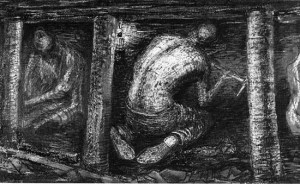Everyone who works in marketing and product management should be spending as much time as they possibly can with customers. Period. This is, of course, a bit of a bland and obvious statement (like all those marketing books that promise so much and deliver so little!) – we know this, we don’t have to be told again! But perhaps we do need to remind ourselves of why it’s so important, why it’s so dangerous to let this activity slip.
I’m currently out in the US working the booth on a tour our company runs (called SQL in the City). This is a fantastic series of events which, at a first glance looks like our company just wanting to give something back to the community – free training, free books, giveaways and so on. And this is true: this is what we’re doing, and is a primary motivator for the tour because we believe (and I personally believe this very strongly) that supporting the community in a simple and altruistic way is one of the strongest feeders for the top of the funnel for our company.
But a slightly more cynical person might suggest – “Hang on, isn’t this just a sales and marketing event? You’re just pushing product!”. And this is also true: obviously we’re using this as an opportunity to talk about our latest products, what we’re doing next and to show this to customers. And this is fine – there’s no bait and switch here, customers don’t mind us talking about this because 1) We’ve been upfront that we will do so, and 2) Because our products are great (I was once told that the big advantage of working in marketing for a company with great products is that “You’re just providing the opportunity for customers to find and use your wonderful products – they should be thanking you!”).
But there’s a third reason, which we don’t really advertise and is, for me, the true value of the events – staying at the coalface with customers. Over the last 3 days I’ve probably spoken to around 40-50 customers, and I’ll speak to another 20 or more on Monday. I’m speaking to them about what we’re doing now, what we’re doing next. I’m speaking to advanced early adopters/innovators* about our vision for what’s to come, late/early majority people about current new products (“What do you think of this?”), and skeptics about existing and older products that have been tried and tested by thousands. I’ve talked to people in different industries, at different levels of seniority and there are even variations in viewpoints by geographical location.
And, as ever, this has just been fabulously useful on a very practical level. Every time I speak to customer I adjust, refine and improve my perspective on what we should be doing. Sometimes these are very subtle nudges (“Mm, may be that idea for product X isn’t quite as simple as I first thought”) and sometimes quite big changes (“I’ve really overestimated how sophisticated late majority people in finance are, for these features – I need to re-think our whole marketing approach there”). One very practical and specific example from yesterday – we’re thinking about providing training packages for some of our products and I ran this past someone currently (not) working for the Federal Government. He told me that, for his department he can easily get budgetary approval for training – not a problem. But that he will never get approval for travel and hotel expenses. So for him, all training has to be onsite at his office (for which he can easily get approval), even if it’s more expensive than doing it somewhere else. This was something I had no idea about before yesterday.
But there always tweaks and adjustments, always. And if you’re not speaking to customers all the time, you hit the significant problem of drift. This is the phenomenon where you start with a really great idea for a product (hopefully from talking to customers historically), and then you start to talk about and “develop” the idea back at the office. So you start with a great use-case (“I’ve just spoken to 5 law firms who say they really need something to automatically read paper documents, perform some OCR and store that data in a database”). You take that back to the office and start throwing it around – what if it did more than that? What if it classified documents as well? What if it provided some interpretation on top? What if it worked for multiple languages? What if it could store the data in the cloud? Etc etc. All great ideas I’m sure, but what would the customers think of the final product? Imagine taking this behemoth to a customer and his/her response being “Erm, I just wanted something cheap to scan in my documents – what’s all this complexity?”. Better to find this out earlier rather than later. Better to make small course corrections as you go along by re-forming and re-shaping the offering with customer input than only finding out at the end that you went way of course somewhere. NB: This is actually just a reflection of the standard Agile approach to product development – the second principle of the Agile Manifesto is:
Welcome changing requirements, even late in development. Agile processes harness change for the customer’s competitive advantage.
How can you make adjustments to your requirements if you don’t know what the customers want?
So, nag over – go and see your customers. Go to a conference, call one of them up, take part in forums, email (though it’s a poor substitute for face-to-face), anything.
* for definitions of these groups see Geoffrey Moore’s Crossing the Chasm – the 101 book for tech marketing.
